A while ago, I made a short post about dance graduates in Baltimore. Since it’s graduation season, I thought it would be appropriate to fulfill the “I’ll come back to this eventually” promise with a deeper set of data. To begin, I’ll be a bit generous, and include both the University of Maryland main campus (College Park, MD) and Frostburg State University (Frostburg, MD) in the regional scope. UMCP is the only regional institution that offers a Masters degree in dance (designated UMCP-M). This data set represents 792 degrees awarded over 14 years (this isn’t necessarily 792 different dancers – some may have both a Masters degree from UMCP and a Bachelors degree from some other local institution). All institutions combined graduate an average of 56(.6) dancers per year for the past 14 years.
First slice at this data examines where dancers get degrees:
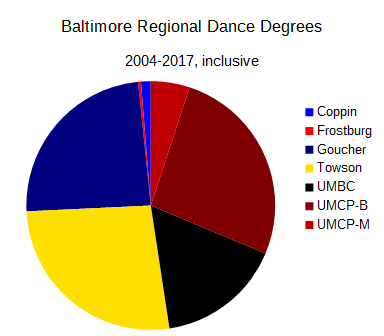
And the view over time:
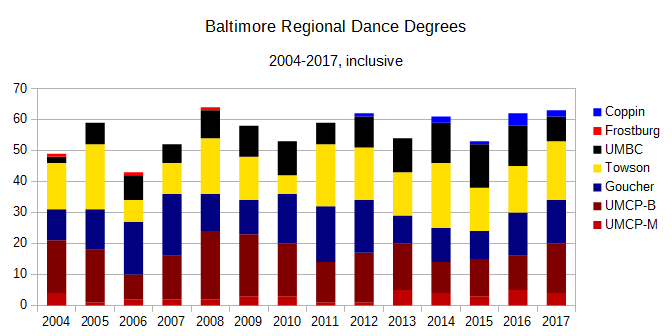
Since Frostburg hasn’t graduated a dancer since 2008 (and Philadelphia is closer to Baltimore than Frostburg), and since UMCP mostly considers itself a DC-regional campus, let’s take those out and focus a bit closer on the Baltimore situation. This reduces the total graduate count to 541 and the average graduation rate to 38(.6) dancers per year.
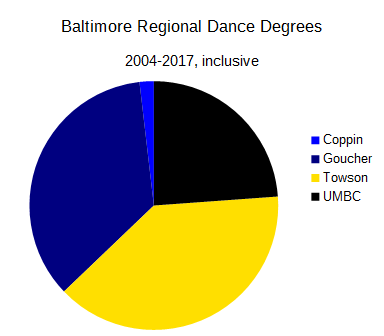
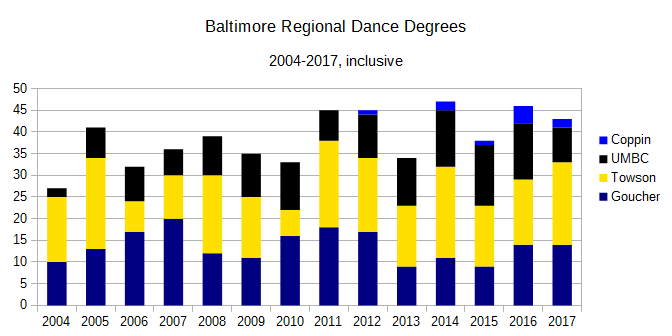
Re-arranging the data a bit to compare institutions looks like this:
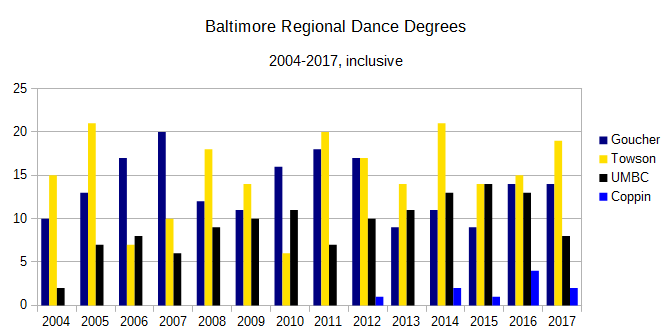
All those bars are pretty, but is there any pattern? Black points include Frostburg and UMCP, red points do not:
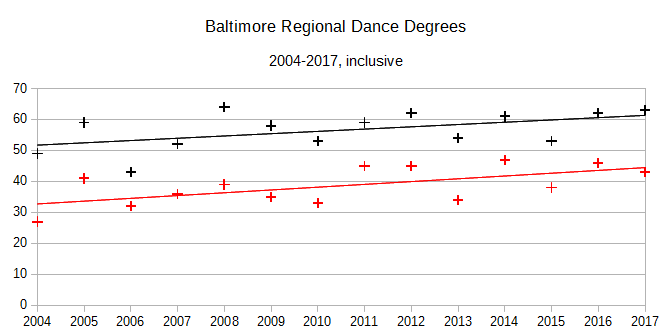
Looks like a definite trend upwards – it’s hard to tell at this scale, but the slope of the linear regression is slightly steeper for the red points. Baltimore institutions are adding about .9 dance degrees per year to the graduation rate (if you include Frostburg and UMCP, it’s about .75 degrees/year). Also worth noting here that the Peabody Institute is introducing their BFA program in fall 2018.
To play a bit with money, assuming current in-state tuition, and excluding Frostburg and UMCP (and thus all graduate degrees), the cost of 541 undergraduate degrees in dance is $40.1 million. Out-of-state tuition and more-than-four-years-to-graduate situations increase this number, but I think it’s safe to say that undergraduate dance is a $3 million/year industry for Baltimore and increasing.
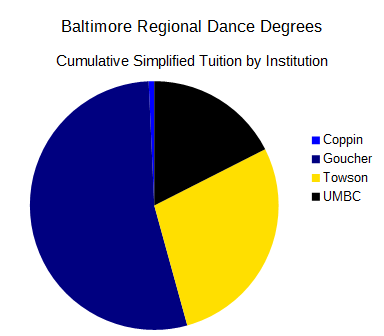
Baltimore institutions have produced almost 550 dancers in the past 14 years, are producing more as time goes by, and dance is strong enough in Baltimore to warrant (in the opinion of the Hopkins/Peabody institution at least) a fifth regional dance degree program.
As a bit of trivia, when picking colors for these charts, I noticed something all Baltimore dance graduates have in common – Gold. University colors are Blue/Gold (Coppin), Blue/Gold (Goucher), Black/Gold (Towson), Black/Gold/Red/White (UMBC), and Red/Gold/White/Black (UMCP). Frostburg does break the rule (Red/Black/White), but no dance graduates since 2008. Maybe there is some hope to bring Baltimore dancers together…
Data source for graduation data is Maryland Higher Education Commission.